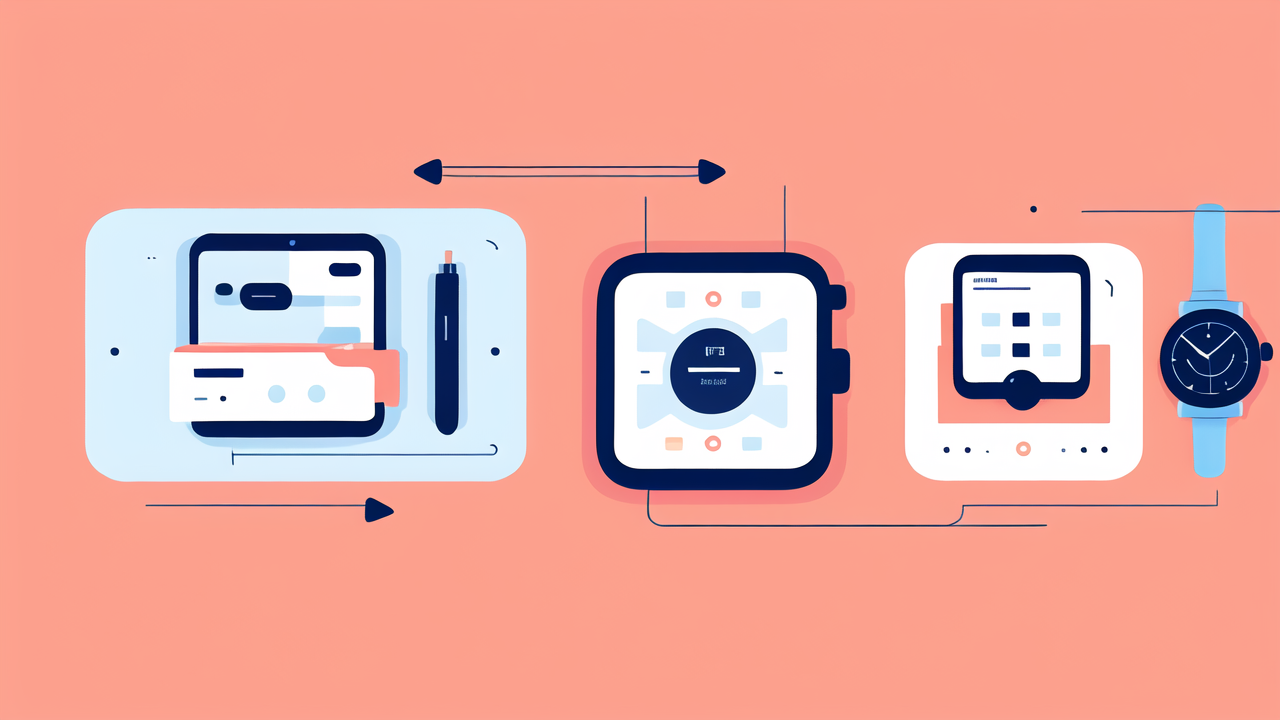Understanding the Appeal of Smart Watches
The Convergence of Technology and Style
Smart watches have become more than just timepieces. They blend cutting-edge tech with fashion-forward design. These devices offer a range of features beyond telling time. They can track fitness, display notifications, and even make calls.

Many models come with customizable faces and bands. This allows users to match their watch to their outfit or mood. Some smart watches are so stylish that they rival traditional watches in looks. They appeal to tech enthusiasts and fashion-conscious individuals alike.
Smart watches are constantly evolving. New models offer improved battery life and more powerful processors. This makes them more useful and appealing to a wider audience. As technology advances, smart watches are becoming an essential part of our digital lives.
Health and Wellness Features of Smart Watches
One of the biggest draws of smart watches is their health tracking capabilities. Most models can monitor heart rate, steps taken, and calories burned. Some even track sleep patterns and stress levels. This data can help users make informed decisions about their health.
Many smart watches offer guided workouts and activity reminders. These features can motivate users to stay active and reach their fitness goals. Some advanced models can detect falls or irregular heart rhythms. This makes them valuable tools for monitoring overall health.
Smart watches can also integrate with other health apps and devices. This creates a comprehensive health monitoring system. Users can track their progress over time and share data with healthcare providers. This makes smart watches powerful tools for managing personal health.
Smart Watches as Fashion Statements
Smart watches have come a long way in terms of design. Early models were often bulky and unattractive. Today's smart watches are sleek, stylish, and customizable. Many high-end fashion brands now offer their own smart watch lines.
Users can change watch faces to match their outfit or mood. Some models offer digital versions of classic analog designs. This allows users to enjoy modern features without sacrificing traditional style. Smart watches can be dressed up or down for any occasion.
The variety of bands available adds to their fashion appeal. From leather to metal to silicone, there's a band for every style. Some smart watches even allow users to create custom watch faces. This level of personalization makes smart watches true fashion accessories.
The Benefits of Fila Watches for Fashion and Function
Classic Design Meets Modern Technology
Fila watches blend timeless style with modern features. They offer a perfect balance of form and function. These watches appeal to those who appreciate classic design but want some smart features. Fila watches often have a more traditional look compared to many smart watches.

Many Fila models incorporate subtle tech features. This might include basic activity tracking or smartphone notifications. However, they maintain the look and feel of a classic timepiece. This makes them ideal for those who want tech features without a tech-heavy appearance.
Fila watches often feature high-quality materials like stainless steel and genuine leather. This gives them a premium feel and durability. Their designs range from sporty to elegant, suiting various tastes and occasions.
The Role of Fila Watches in Fitness and Activity Tracking
While not as advanced as some smart watches, many Fila watches offer fitness tracking features. These might include step counting, distance tracking, and calorie burn estimation. Some models also have built-in heart rate monitors.
Fila's fitness features are often more straightforward than those in smart watches. This can be appealing to users who want simple, easy-to-understand data. The watches are often water-resistant, making them suitable for swimming and other water activities.
For casual fitness enthusiasts, Fila watches provide a good balance. They offer basic tracking without overwhelming users with data. This makes them ideal for those who want to monitor their activity without diving too deep into metrics.
How Fila Watches Can Integrate with Your Wardrobe
Fila watches are known for their versatile designs. They can easily transition from casual to formal wear. Many models feature interchangeable straps, allowing users to customize their look. This versatility makes Fila watches a practical choice for various outfits and occasions.
The brand offers a wide range of styles, from sporty digital watches to elegant analog designs. This variety ensures that there's a Fila watch to suit any personal style. Whether you prefer bold colors or understated elegance, Fila has options.
Fila watches often feature the brand's iconic logo, adding a touch of sportswear chic. This can be a stylish accent for athleisure outfits. At the same time, their more subtle designs can complement business or formal attire.
Key Considerations When Purchasing a Watch
Assessing Your Lifestyle and Watch Usage
When choosing between a Fila watch and a smart watch, consider your daily routine. Think about how you'll use the watch. Do you need advanced tech features, or is basic timekeeping enough? Your job and hobbies can influence this decision.

If you're always on the go and need to stay connected, a smart watch might be best. It can help manage notifications and track fitness. If you prefer a more traditional look or simpler functionality, a Fila watch could be ideal.
Consider your comfort with technology. Smart watches require regular charging and updates. Fila watches are often simpler to maintain. Think about which type of watch would integrate best with your lifestyle.
Comparing Price Points and Features
Smart watches generally come with a higher price tag than Fila watches. However, they offer more advanced features. Consider what features you'll actually use. Sometimes, paying for advanced tech you won't use isn't worth it.
Fila watches are often more affordable. They offer good quality at a lower price point. While they may lack some smart features, they excel in style and basic functionality. Compare the features of both types to see which offers the best value for your needs.
Remember to factor in long-term costs. Smart watches may need accessory purchases or app subscriptions. Fila watches might require battery replacements. Consider these ongoing costs when making your decision.
After-Sale Services and Warranty Options
Both smart watches and Fila watches usually come with warranties. However, the coverage can vary. Smart watches often have more complex warranty terms due to their technology. Fila watches typically have straightforward warranty policies.
Consider the availability of repair services. Smart watches might need specialized tech support. Fila watches can often be serviced by standard watch repair shops. This can affect the long-term usability of your watch.
Look into the brand's customer service reputation. Good after-sale support can make a big difference in your satisfaction. Check user reviews and ratings for both the product and the company's service. This can help you make an informed decision about your purchase.




Leave a comment
This site is protected by hCaptcha and the hCaptcha Privacy Policy and Terms of Service apply.